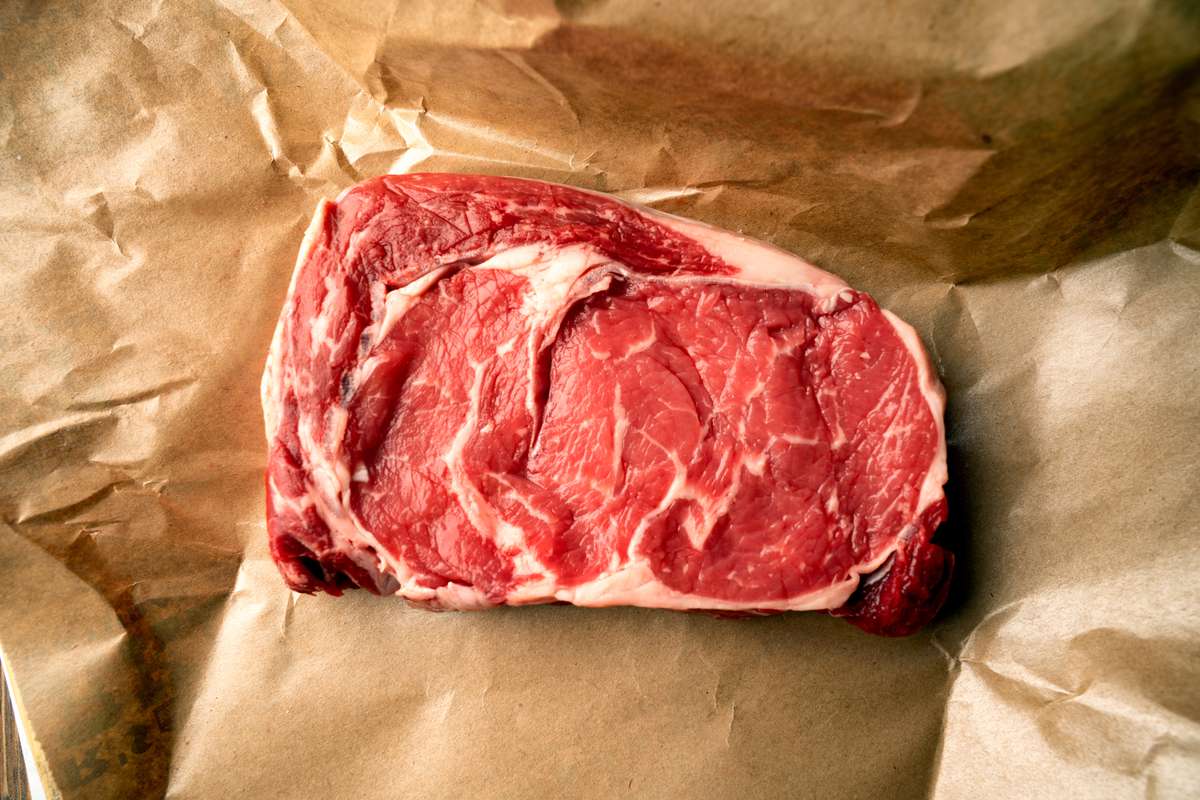How to Safely Store Different Kinds of Meat—and Make It Last
We combined FDA guidelines and test kitchen tips to give you a definitive guide on how to store meat.
Buying meat is often expensive, so when you do pick some up for a recipe, you don’t want any to go to waste. In order to ensure it stays fresh, there are a lot of food safety factors to keep in mind. Store it safely in the refrigerator or freezer before you cook it, and you can keep your kitchen well-stocked for days, weeks, and even months to come.
The U.S. Food & Drug Administration (FDA) has specific recommended timeframes for storing different kinds of meat, from raw poultry and steaks to bacon and corned beef. It’s divided into refrigeration and freezer guidelines, so you know exactly how long you can keep that ham you bought. We combined those parameters with storage tips from the Food & Wine Test Kitchen—read on for the full breakdown of how to store meat.
FDA Guidelines for Refrigeration and Freezing
The FDA has a storage chart with “short, but safe” time limits for refrigerating food so that it doesn’t become spoiled or dangerous. (For reference, it refers to refrigerated food at 40 degrees Fahrenheit, or 4 degrees Celsius.) Guidelines for freezing those same foods are also provided; however, the FDA notes that because freezing (at 0 degrees Fahrenheit, -18 degrees Celsius) “keeps food safe indefinitely” the recommendations are based on preserving the quality of the meat. Here’s a summary of the FDA guidelines. The full chart, which also addresses eggs, soups, stews, and more, can be found on the official website.
Note: make sure you’re purchasing the meat before sell-by or expiration dates.
Bacon and Sausage
Bacon can last seven days in the fridge and one month in the freezer. Raw sausage, whether it’s made from pork, beef, chicken, or turkey, is recommended to be kept one to two days in the fridge, and up to one to two months in the freezer. Smoked breakfast links and patties have a bit of a longer lifespan—you can store them up to seven days in the fridge, and one to two months in the freezer.
Fresh Hamburger Meat, Other Ground Meat, and Cut-Up/Cubed Meat
The more meat is cut up, the more exposure there is to potential bacteria. So for hamburger, stir-fry strips, stew meat, and other types of cut-up meats, stick to one to two days in the fridge and three to four months in the freezer. Ground turkey, veal, pork, and lamb can also be kept one to two days in the fridge, and three to four months in the freezer.
Fresh Meat (Beef, Veal, Lamb, and Pork)
The FDA breaks down larger cuts of fresh meat into steaks, chops, roasts, and variety meats (tongue, kidneys, liver, heart, and chitterlings). Steaks can last three to five days in the fridge and six to 12 months in the freezer; roasts, too, can last three to five days in the fridge and up to four to 12 months in the freezer, if you want to keep some ready. As for chops, the FDA says three to five days in the fridge and four to six months in the freezer, while the variety meats can be stored for one to two days in the fridge and three to four months in the freezer.
Leftover Cooked Meat
For your leftover cooked meat and meat dishes, the FDA says they’ll keep three to four days in the fridge and two to three months in the freezer. As for the accompanying gravy and broths? One to two days in the fridge, and two to three months in the freezer.
Fresh Chicken and Turkey
Whole chickens or turkeys can last one to two days in the fridge and up to one year in the freezer, so they’re always great to have on hand. If you have cut-up chicken parts like breasts, drumsticks, or thighs, those can also last one to two days in the fridge and a lengthy nine months in the freezer. Like the variety meats above, giblets have the shortest lifespan of the bunch, at one to two days in the fridge and three to four months in the freezer.
Leftover Cooked Poultry
If you make fried chicken, rest assured that it can last three to four days in the fridge and up to four months in the freezer, in case you want to save it for later. Cooked poultry dishes (like, say, Chicken Cacciatore) can also last three to four days in the fridge and will keep a bit longer in the freezer than fried chicken does—four to six months.
Plain pieces of poultry (no sauce or gravy) can last three to four days in the fridge or up to four months in the freezer, while pieces of poultry covered in broth or gravy (e.g. leftover Thanksgiving turkey) can last the same time in the fridge and up to six months in the freezer. Chicken nuggets and patties have a bit of a shorter timeframe—three to four days in the fridge, and one to three months in the freezer.
Hot Dogs and Lunch Meats (In Freezer Wrap)
Once opened, packages of hot dogs and lunch meats have a shorter shelf life. An opened package can last one week in the fridge and one to two months in the freezer, while unopened hot dogs are good for two weeks in the fridge and one to two months in the freezer. Opened lunch meats, like salami and pepperoni, can last three to five days in the fridge and one-two months in the freezer, while unopened lunch meats can span two weeks in the fridge and one to two months in the freezer.
Ham and Corned Beef
If you’re dealing with a corned beef in its original packaging (pickling juices included), you can store it in the fridge for five to seven days, or drain it and freeze it, well-wrapped, for up to one month. Canned ham, on the other hand—the kind that’s labeled “keep refrigerated”—can be stored unopened in the fridge for six to nine months (don’t freeze it), or opened, stored in the fridge for three to five days and in the freezer for one to two months.
For fully cooked ham, the storage timeframe depends on the size. A whole ham can be refrigerated for up to seven days and frozen for one to two months, while a half ham can refrigerated for three to five days and frozen for one to two months. Finally, the FDA says sliced ham is best for three to four days in the refrigerator and one to two months in the freezer.
How to Store Meat in the Fridge
When you’re refrigerating raw meat, keep it in its original packaging right up until you use it, and rest it on a plate or rimmed baking sheet on the lowest shelf of the fridge. This will contain contamination in the event of any drips or spills.
For cooked meat, let it cool completely (for a max of two hours) at room temperature, and then slice, shred, debone, or cut the meat as desired and store it in an airtight container in the fridge as directed.
How to Store Meat in the Freezer
When you’re freezing raw meat, on the other hand, we recommend removing it from packaging and placing it in resealable plastic baggies or airtight containers. If you’re freezing it for longer than a week, wrap each piece of meat in plastic wrap, and then place in resealable bags. Wrapping meat in individual servings allows you to thaw the exact amount you need and keep the rest frozen. Raw ground meat is an exception—keep that in the original packaging unless you want to pre-portion it. (For extra protection and contamination prevention, keep the package in a plastic bag or silicone Stasher bag.) Again, you’ll want to keep the meat on the lowest shelf and away from other groceries.
For cooked meat, you’ll want to let it cool and then slice, shred, debone, or cut it just like you would for the refrigerator. Then, we’d recommend storing it in silicone or resealable plastic bags, sealing the meat in, pressing to flatten out the air, and freezing. This helps to save space in your freezer and prevents freezer burn.
In general, when you’re freezing meat, you want to think about how you’re going to consume it once it’s defrosted. For example, you might want to portion out a 10-pack of chicken breasts so that they don’t all freeze together and become stuck in the same package—you can separate individual cuts by laying them out flat or putting parchment individually between them. The same idea applies to pork chops, burger patties, fish filets, steaks, etc., so you can take them out in batches.
How to Thaw Frozen Meat
Once you’re ready to defrost the meat, thaw it in the fridge on a plate or rimmed baking sheet, which will catch leaks. If your package is about one-inch thick, it should thaw overnight; something denser, like a roast or turkey, might take two days or more. If you want to speed up that process, place the meat in a stockpot under the kitchen faucet and let the tap run cold water over the meat (a trickle is okay) until it’s thawed. The cold water helps ensure that the outside of the meat doesn’t get warm while the inside is still defrosting.
Via Food and Wine

